Related Research Articles
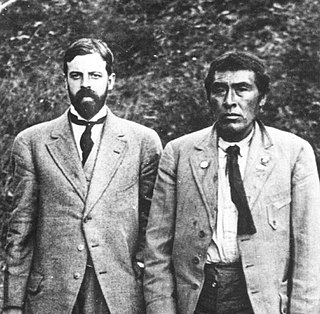
Alfred Louis Kroeber was an American cultural anthropologist. He received his PhD under Franz Boas at Columbia University in 1901, the first doctorate in anthropology awarded by Columbia. He was also the first professor appointed to the Department of Anthropology at the University of California, Berkeley. He played an integral role in the early days of its Museum of Anthropology, where he served as director from 1909 through 1947. Kroeber provided detailed information about Ishi, the last surviving member of the Yahi people, whom he studied over a period of years. He was the father of the acclaimed novelist, poet, and writer of short stories Ursula K. Le Guin.

The Wintu are Native Americans who live in what is now Northern California. They are part of a loose association of peoples known collectively as the Wintun. Others are the Nomlaki and the Patwin. The Wintu language is part of the Penutian language family.

The Wappo are an indigenous people of northern California. Their traditional homelands are in Napa Valley, the south shore of Clear Lake, Alexander Valley, and Russian River valley. They are distantly related to the Yuki people, from which they seem to have diverged at least 500 years ago. Their language, Wappo, has been influenced by the neighboring Pomo, who use the term A'shochamai or A'shotenchawi, meaning "northerners", to refer to the Wappo.

The Yuki are an indigenous people of California who were traditionally divided into three groups: Ukomno'om, Huchnom, and Ukohtontilka or Ukosontilka. The territory of these three groups included Round Valley and much of northern Mendocino County and Lake County. Today they are enrolled members of the Round Valley Indian Tribes of the Round Valley Reservation. The exonym "Yuki" may derive from the Wintu word meaning "foreigner" or "enemy."
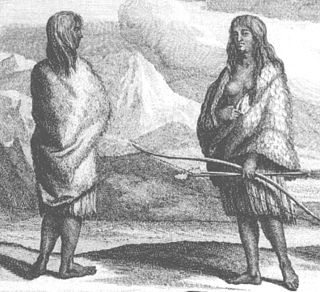
The Pericú were the aboriginal inhabitants of the Cape Region, the southernmost portion of Baja California Sur, Mexico. They have been linguistically and culturally extinct since the late 18th century.
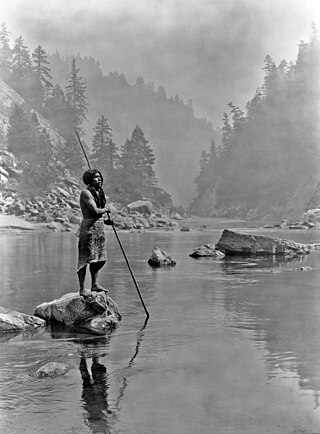
Hupa are a Native American people of the Athabaskan-speaking ethnolinguistic group in northwestern California. Their endonym is Natinixwe, also spelled Natinook-wa, meaning "People of the Place Where the Trails Return". The Karuk name was Kishákeevar / Kishakeevra. The majority of the tribe is enrolled in the federally recognized Hoopa Valley Tribe.
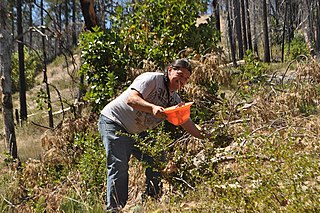
The Karuk people are an indigenous people of California, and the Karuk Tribe is one of the largest tribes in California. Karuks are also enrolled in two other federally recognized tribes, the Cher-Ae Heights Indian Community of the Trinidad Rancheria and the Quartz Valley Indian Community.
The Nomlaki are a Wintun people native to the area of the Sacramento Valley, extending westward to the Coast Range in Northern California. Today some Nomlaki people are enrolled in the federally recognized tribes: Round Valley Indian Tribes, Grindstone Indian Rancheria or the Paskenta Band of Nomlaki Indians. The Nomlaki were bordered by the Wintu (Wintun) in the north, the Yana in the northeast and east, the Konkow (Maiduan) in the east, the Patwin (Wintun) in the south, and the Yuki in the west.

The Patwin are a band of Wintun people in Northern California. The Patwin comprise the southern branch of the Wintun group, native inhabitants of California since approximately 500.
The Tolowa people or Taa-laa-wa Dee-ni’ are a Native American people of the Athabaskan-speaking ethno-linguistic group. Two rancherías still reside in their traditional territory in northwestern California. Those removed to the Siletz Reservation in Oregon are located there.

The Yana are a group of Native Americans indigenous to Northern California in the central Sierra Nevada, on the western side of the range. Their lands, prior to encroachment by white settlers, bordered the Pit and Feather rivers. They were nearly destroyed during the California genocide in the latter half of the 19th century. The Central and Southern Yana continue to live in California as members of Redding Rancheria.

The Cochimí were the indigenous inhabitants of the central part of the Baja California peninsula, from El Rosario in the north to San Javier in the south. Information on Cochimí customs and beliefs has been preserved in the brief observations by explorers but, above all, in the writings of the Jesuits. Particularly important and detailed are the works of Miguel Venegas and Miguel del Barco (1973).

The Paipai are an indigenous people of Mexico living in northern Baja California. Their traditional territory lies between the Kiliwa on the south and the Kumeyaay and Cocopa on the north, and extending from San Vicente near the Pacific coast nearly to the Colorado River's delta in the east. Today they are concentrated primarily at the multi-ethnic community of Santa Catarina in Baja California's Sierra de Juárez.
Peveril Meigs III was an American geographer, notable for his studies of arid lands on several continents and in particular for his work on the native peoples and early missions of northern Baja California, Mexico.
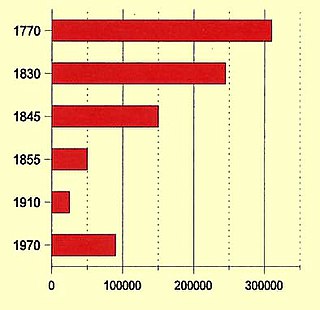
The population of Native California refers to the population of Indigenous peoples of California. Estimates prior to and after European contact have varied substantially. Pre-contact estimates range from 133,000 to 705,000 with some recent scholars concluding that these estimates are low.
Robert Fleming Heizer was an archaeologist who conducted extensive fieldwork and reporting in California, the Southwestern United States, and the Great Basin.

William Michael Mathes was an American historian and academic who focused on the histories of Mexico and Spain. Mathes was a leading expert on the history of Baja California. His articles can be found in the California Historical Society Quarterly, Southern California Quarterly, Journal of San Diego History, Journal of California Anthropology, Pacific Coast Archaeological Society Quarterly, Calafia, Meyibó, and other publications.
William Clifford Massey (1917–1974) was an anthropologist who played a key role in the study of the prehistory of the Baja California Peninsula in Mexico. His scientific contributions included archaeological surveys, excavations, and the documentation of previous collections, as well as detailed analyses of ethnohistoric and linguistic evidence bearing of the region's prehistory.

The California genocide was the killing of thousands of Indigenous peoples of California by United States government agents and private citizens in the 19th century. It began following the American Conquest of California from Mexico, and the influx of settlers due to the California Gold Rush, which accelerated the decline of the Indigenous population of California. Between 1846 and 1873, it is estimated that non-Natives killed between 9,492 and 16,094 California Natives. Hundreds to thousands were additionally starved or worked to death. Acts of enslavement, kidnapping, rape, child separation and displacement were widespread. These acts were encouraged, tolerated, and carried out by state authorities and militias.
Woodrow Wilson Borah was a U.S. historian of colonial Mexico, whose research contributions on demography, economics, and social structure made him a major Latin Americanist. With his 1999 death "disappears the last great figure in the generation that presided over the vast expansion of the Latin American scholarly field in the United States during the years following World War II." With colleagues at University of California, Berkeley who came to be known as the "Berkeley School" of Latin American history, Borah pursued projects to gather data from archives on indigenous populations, colonial enterprises, and "land-life" relations that revolutionized the study of Latin American history.
References
- Brooks, Sheilagh T. 1976. "Tribute to Sherburne Friend, 1896-1974". Journal of California Anthropology 3:3-12.
- Mathes, W. Michael. 2005. "Reflections and Considerations Regarding Baja California Demography Before and During the Mission Period". In Archaeology without Limits: Papers in Honor of Clement W. Meighan, edited by Brian D. Dillon and Matthew A. Boxt, pp. 205–212. Labyrinthos, Lancaster, California.